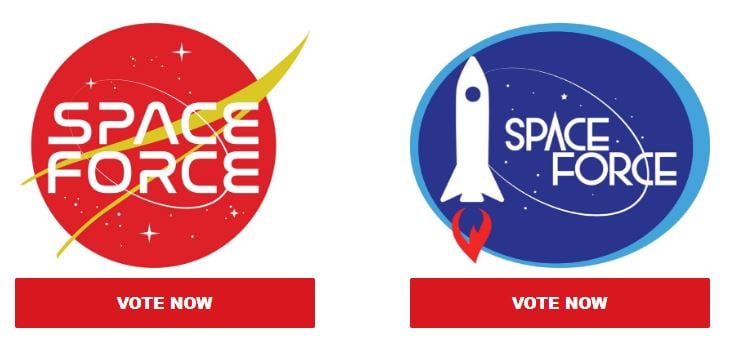WASHINGTON — The National Space Council on Tuesday served up six recommendations to President Donald Trump to enable the creation of a Space Force, moving the birth of a sixth military branch one step closer to fruition.
Vice President Mike Pence, who chairs the council, said he anticipated that President Donald Trump will likely take action on at least some of the recommendations very soon.
“He only asks me about the Space Force every week,” Pence joked.
RELATED

The six recommendations laid out by Deputy Defense Secretary Patrick Shanahan include language that:
- Guides the creation of a unified space command to be known as U.S. Space Command
- Gives direction on an legislative proposal for a Space Force
- Calls for creating a funding plan in the fiscal year 2020 budget for a Space Force
- Outlines an interagency authorities review
- Establishes joint Space Development Agency for technology procurement
- Strengthens the relationship between military space and the intelligence community
Most of the recommendations, such as the creation of a U.S. Space Command and a Space Development Agency, were laid out by Pence in an August speech at the Pentagon that laid out the first steps for starting a Space Force.
“The creation of the Space Force is no easy task. Mr. Vice President, we’re moving out,” Shanahan said during the meeting.
Shanahan, who has been the Pentagon’s point person responsible for formulating a plan to implement a Space Force, said the most pressing issue was to create a Space Development Agency that will be provisioned to rapidly develop new technology even as the space mission grows and changes. The Pentagon is currently drafting a statement of work for the new agency, he said.
Over the course of the two hour meeting, officials from the Defense Department, State Department, National Reconnaissance Office and NASA weighed in on the Space Force proposal — though notably, no voices opposing the issue were heard and specifics on how to move forward on the recommendations were not delivered.
Defense One, which obtained a 13-page memo laying out the Pentagon’s current plan, reported that the Space Force will absorb elements of Air Force Space Command, the Navy’s Space and Naval Warfare Systems Command, the Naval Satellite Operations Center and the Army’s 1st Space Brigade. However, the National Reconnaissance Office would remain largely separate from other military space agencies.
Air Force Secretary Heather Wilson, who formerly opposed separating the Air Force’s space functions from the service but now says she supports Trump’s Space Force plan, attended Tuesday’s meeting as a guest of Shanahan, although she did not speak.
Three current and former space officials were tapped to speak to the council on national security space issues and the Space Force: Doug Loverro, deputy assistant secretary of defense for space policy; Kevin McLaughlin, a former three-star who was the deputy commander of U.S. Cyber Command during the Obama administration; and Mark Sirangelo, the former head of Sierra Nevada Corp.’s space business.
All three speakers highlighted a need for the Defense Department to create U.S. Space Command as a unified command, to establish a Space Force and to make a new assistant secretary of defense for space position to help guide the new service into being.
Creating an assistant secretary of space for defense is “fundamental to getting this job done” Loverro said, but after a Space Force is established, that role could potentially fall to an existing undersecretary.
“If you want speed, you need a decisionmaker,” he told the council members.
McLaughlin cautioned the council to ensure that all elements of the new military space apparatus have no overlap in responsibilities.
Valerie Insinna is Defense News' air warfare reporter. She previously worked the Navy/congressional beats for Defense Daily, which followed almost three years as a staff writer for National Defense Magazine. Prior to that, she worked as an editorial assistant for the Tokyo Shimbun’s Washington bureau.








